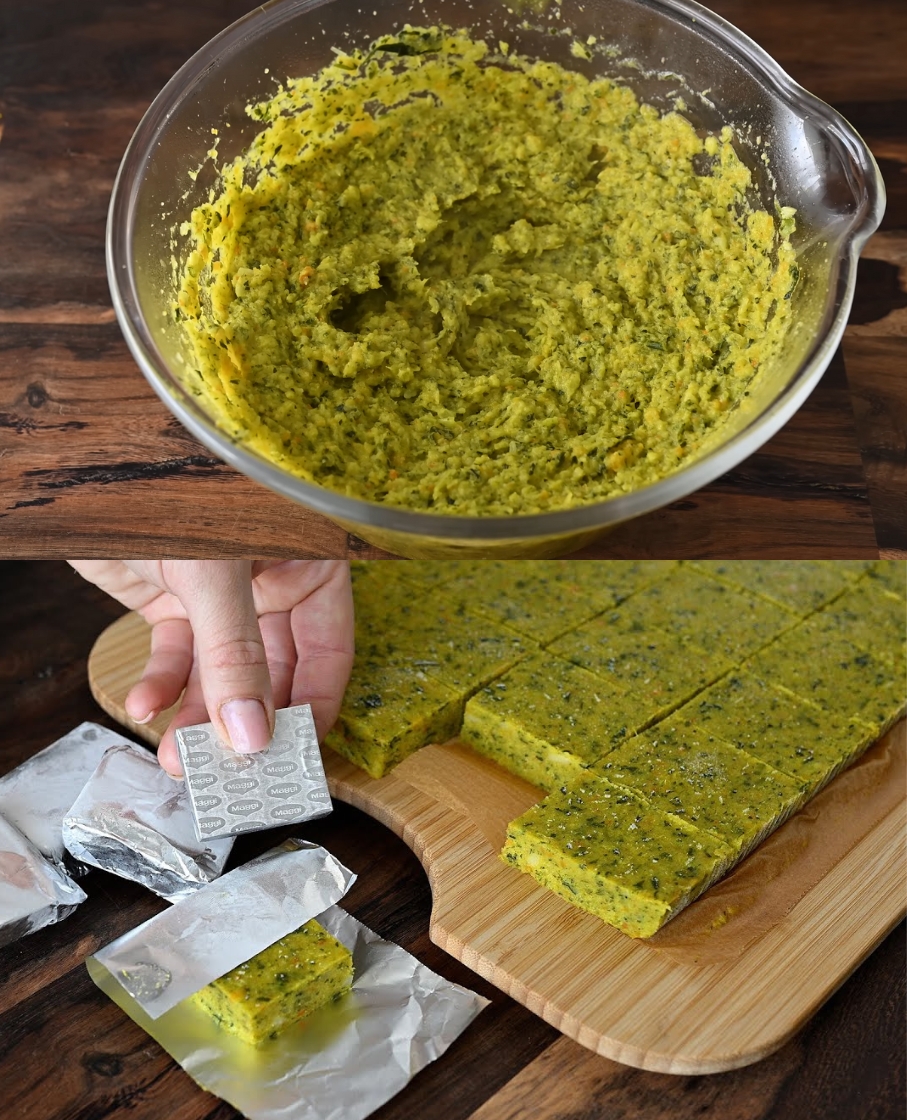This homemade vegetable broth is a flavorful and nutritious base that enhances any dish it touches. Packed with root vegetables, aromatic spices, and herbs, it’s a versatile recipe that can be enjoyed on its own or used in various culinary applications. Making broth from scratch allows you to control the ingredients and flavor, ensuring a pure and satisfying result.
Preparation Time: 15 minutes
Cooking Time: 30 minutes
Total Time: 45 minutes
Servings: 4-6 cups of broth
Ingredients:
- 3 Carrots, chopped
- 1 Leek, sliced
- 2 Parsnips, chopped
- 2 Root Parsley, chopped
- 1 Onion, sliced
- 2 Cloves Garlic, minced
- 1/2 Kohlrabi, chopped
- 1/2 Celeriac, chopped, including leaves
- 1 Turmeric, sliced
- A Handful of Parsley stems
- Sunflower Oil, for sautéing
- 80 Grams of Salt
Directions:
- Saute the Aromatics: Heat a splash of sunflower oil in a large pot or Dutch oven over medium heat. Add the sliced onions and garlic, sautéing until softened and fragrant.
- Add the Vegetables: Add the chopped carrots, parsnips, root parsley, kohlrabi, and celeriac root to the pot. Cook for a few minutes, allowing the flavors to meld.
- Simmer the Broth: Pour enough water into the pot to cover the vegetables. Add the turmeric, salt, and parsley stems. Bring to a simmer, then reduce heat and let it cook gently for 30 minutes until the vegetables are tender.
- Strain the Broth: After cooking, let the broth cool slightly. Strain it through a fine-mesh sieve or cheesecloth, removing the solids.
- Immediate Enjoyment or Future Use: Adjust the salt to taste and enjoy the broth immediately, or cool it completely and store it in containers for future use. The broth can be frozen and used later in soups, stews, sauces, or risotto.
Serving Suggestions:
- Soup Base: Use this broth as a base for your favorite soups, like vegetable, lentil, or noodle soup.
- Cooking Grains: Cook rice, quinoa, or other grains in the broth for extra flavor.
- Sipping Broth: Enjoy a warm cup of this broth on a cold day for a soothing and nourishing drink.
Cooking Tips:
- Customizing Flavors: Add your favorite herbs, like thyme or rosemary, for a different flavor profile.
- Clear Broth: For a clearer broth, avoid stirring the vegetables too much while cooking.
- Salt Control: Start with less salt and adjust to taste after straining the broth.
Nutritional Benefits:
- Rich in Nutrients: The vegetables provide essential vitamins and minerals, including vitamin A from carrots and vitamin C from parsley.
- Low in Calories: This broth is low in calories, making it a healthy addition to any meal.
- Anti-Inflammatory: Turmeric adds anti-inflammatory properties, enhancing the broth’s health benefits.
Dietary Information:
- Vegan: This broth is entirely plant-based, making it suitable for vegan diets.
- Gluten-Free: All ingredients are naturally gluten-free.
- Low Sodium Option: Reduce the amount of salt for a low-sodium version.
Nutritional Facts (per cup):
- Calories: 40 kcal
- Carbohydrates: 9g
- Protein: 1g
- Fat: 1g
- Fiber: 2g
- Sodium: 400mg
Storage:
- Refrigerator: Store in an airtight container in the refrigerator for up to 5 days.
- Freezer: Freeze in portions for up to 3 months. Thaw in the refrigerator or reheat directly from frozen.
Why You’ll Love This Recipe:
- Flavorful and Versatile: This broth adds depth to any dish, making it a kitchen staple.
- Healthy and Nourishing: Loaded with vitamins and minerals, it’s a nutritious choice for any diet.
- Easy to Make: With simple steps and ingredients, this broth is a breeze to prepare.
- Perfect for Meal Prep: Make a batch and store it for easy use in future recipes.
Conclusion: Homemade vegetable broth is a versatile, nutritious, and flavorful base for countless dishes. It’s a simple way to add depth and complexity to your cooking while controlling the ingredients and salt content. Whether you enjoy it as a sipping broth or use it in soups, stews, or grains, this homemade broth will elevate your culinary creations.
Frequently Asked Questions:
- Can I use other vegetables? Yes, feel free to add or substitute vegetables based on what you have on hand.
- How can I make the broth richer? Use more vegetables or simmer the broth for a longer time to intensify the flavor.
- Can I omit the turmeric? Yes, turmeric is optional and can be left out if you prefer.
- What’s the best way to store the broth? Store in airtight containers in the refrigerator or freeze in portions for longer storage.
- Can I use olive oil instead of sunflower oil? Yes, olive oil is a good substitute for sunflower oil.
- Is it okay to add spices like bay leaves or peppercorns? Absolutely! Adding bay leaves or peppercorns can enhance the flavor.
- Can I reuse the strained vegetables? The vegetables can be blended into a puree for a thicker soup or discarded if you prefer a clear broth.
- How can I make the broth less salty? Start with less salt and adjust to taste after cooking.
- What can I use the broth for? Use it in soups, stews, sauces, or to cook grains like rice or quinoa.
- Can I use dried parsley instead of fresh? Yes, dried parsley can be used, but fresh parsley offers a more vibrant flavor.

